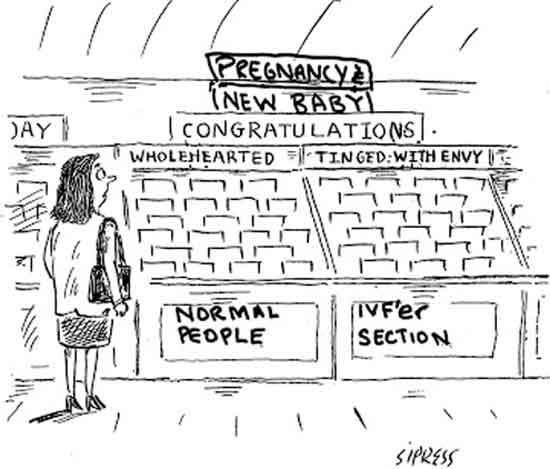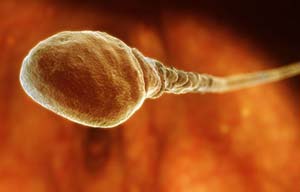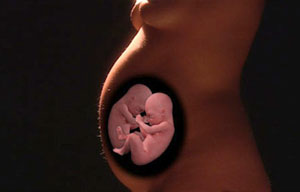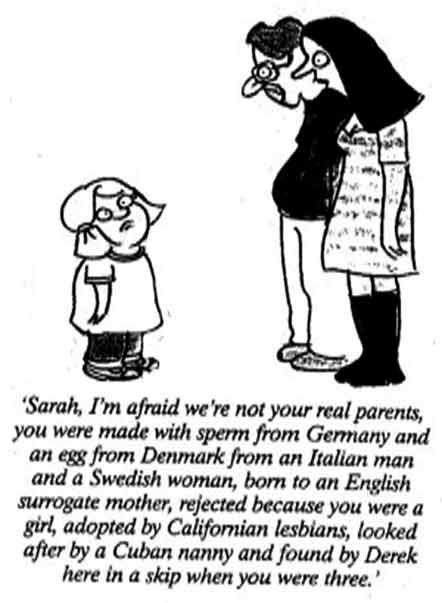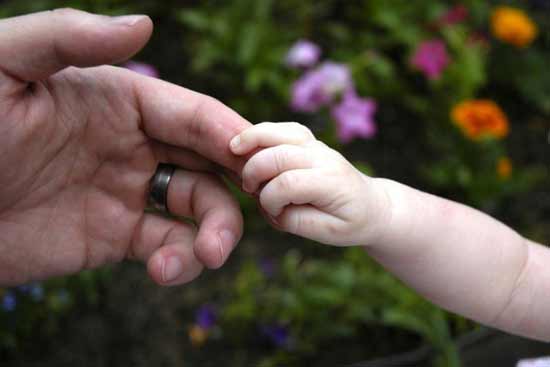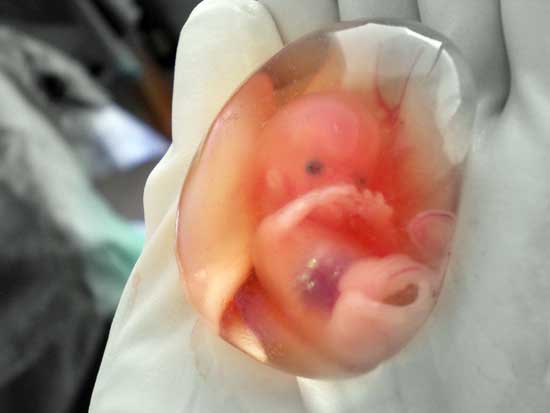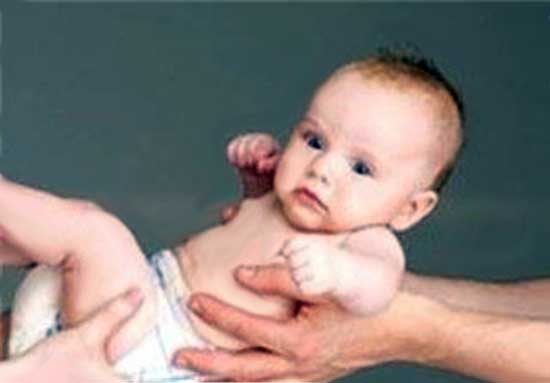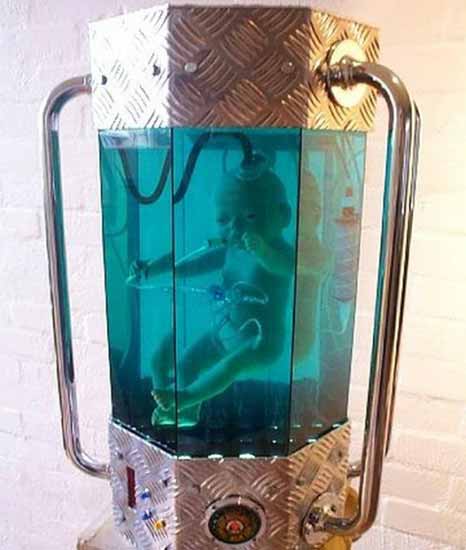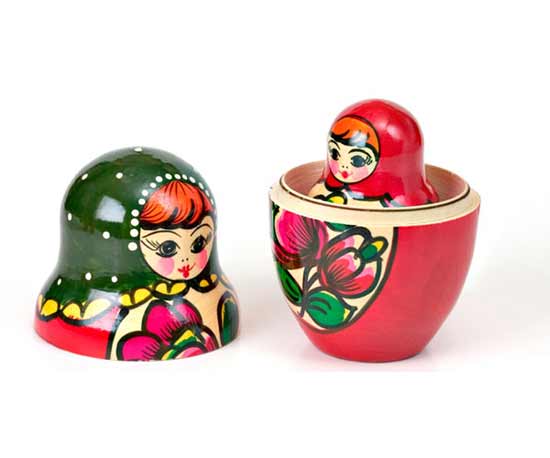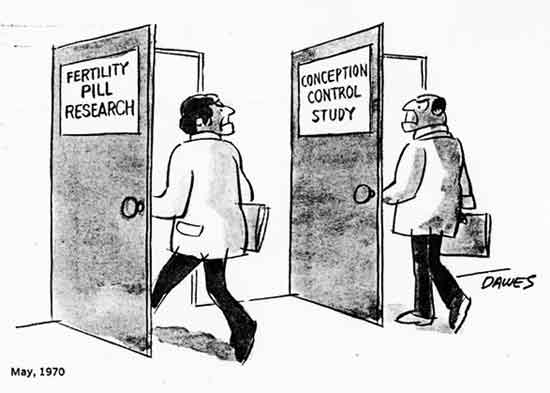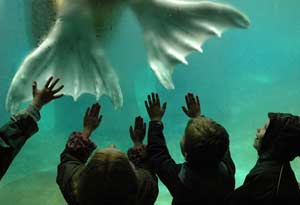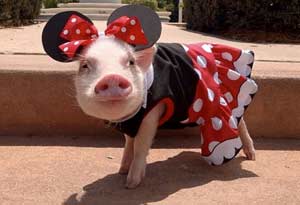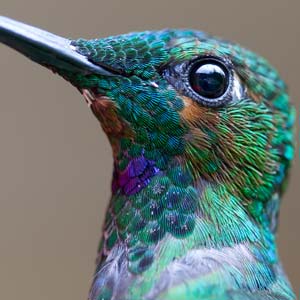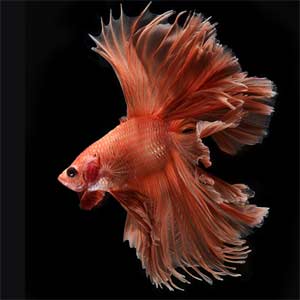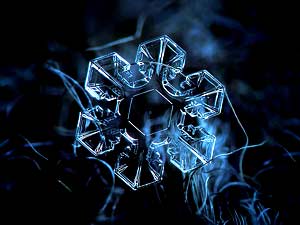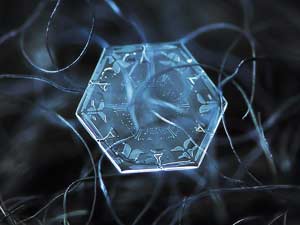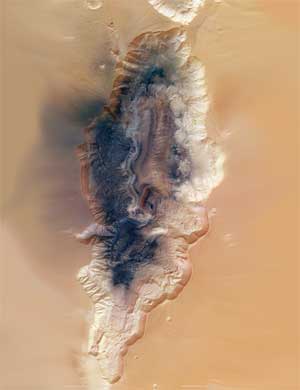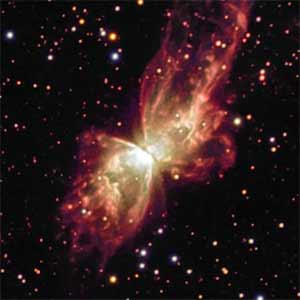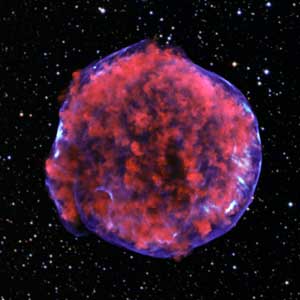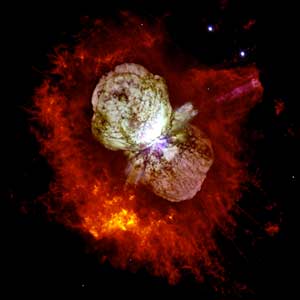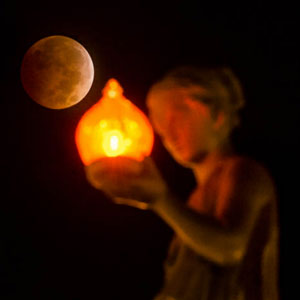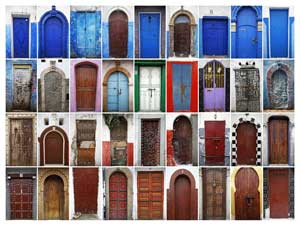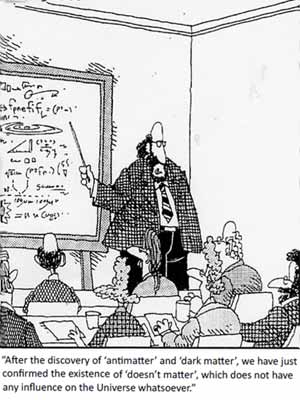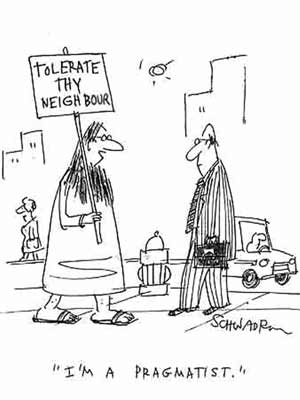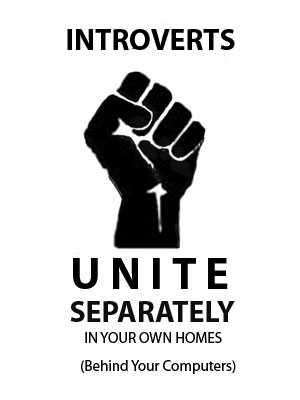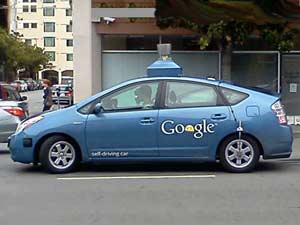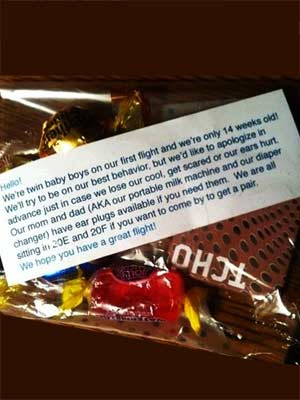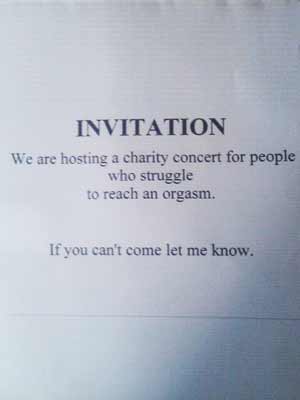Having children makes you no more a parent than having a piano makes you a pianist.
—Assisted Reproductive Technology
Oct. 15, 2014
You may have strong feelings about Assisted Reproduction Technology (ART) or hardly any opinion at all. If you’ve wanted desperately to have a child of your own and are beginning to believe there’s no way that’s ever going to happen — for whatever reason — then you may think ART (essentially fertilising your eggs anywhere other than inside your own body) is your last hope. If you have strong (often fundamental) religious beliefs or feel strongly that the world is overpopulated and we should all do our part to curb the growth of humanity, then you may feel ART should be heavily regulated or even outlawed in any form. (But this isn’t going to happen.)
Most of you are probably just wondering what all the fuss is about.
I’ll start with surrogacy, since, in its many forms, it contains most of the other bits and pieces currently available.
Surrogacy
- What is surrogacy and what are the different types?
- What does the procedure involve?
- Who should or shouldn’t be, or use, a surrogate?
- What are the legal issues?
- What are the moral issues?
1. What Is Surrogacy and What Are the Different Types?
Up to 15% of couples are unable to have children.
For a child to be born, 3 things are needed: an egg, a sperm, and a womb. In a surrogate pregnancy, the surrogate supplies the womb. The source of the other two components (egg and sperm) can vary. Thus, a surrogate mother is a woman who carries another’s child, which she is (usually contractually) obligated to surrender soon after its birth. Her right to change her mind and keep the child varies by locale.
In general, it may be said that there are 3 types of mothers:
- The biologic mother provides the egg and thus half the genetic code — that is, 23 chromosomes.
- The gestational mother provides a safe space inside her body where the foetus can develop and further contributes its microbiota.
- The designated mother provides a home and care for the subsequent child (its nurture).
Each of these mothers is important for a child’s well-being and development. All 3 are traditionally found in a single person. But not always.
A surrogate mother is in some respects similar to an armoured car driver, being paid to assume risks and carry a “product” intended for others. She may bear a child for a single woman who feels herself too busy (or perhaps too afraid or too infirm in some way) to be pregnant, or one who feels that pregnancy may age her or “ruin” the body on which her reputation or career is based. Or the surrogate may bear a child for a man who wants offspring but not a mate (or perhaps just not a mate with a womb) and so he uses a surrogate to achieve this goal. The surrogate may use her own egg, or she may use that of a donor. This donor may be the person to whom the child is to be surrendered, or the ovum may be one that has been purchased, not donated at all. The ovum may even be a gift from a close genetic relative or a close caring friend.
The “traditional” type of surrogacy involves the surrogate mother being artificially inseminated with sperm from the intended father or from a donor [who may be a friend or relative of the prospective parent(s)], or the sperm may be purchased off the internet or from a fertility centre catalogue of sperm of various types (with the potential of carrying certain desired traits). Cryo-preserved (frozen) sperm is often used (thawed just prior to insertion) as this allows prospective parents time to order additional quality testing should they desire. In a traditional surrogacy, the egg used will be the surrogate’s own and thus genetically the surrogate is the mother of the resulting child. The intended father’s name is generally put on the birth certificate, whether his sperm was used or someone else’s, though in some legal jurisdictions the traditional surrogate’s spouse or partner is put on the birth certificate until a paternity test proves the intended father is actually the genetic father.
In a “gestational” type of surrogacy, the birth mother supplies only the uterus. The source of both the eggs and sperm, however, can vary: they can be from the intended mother and father, or one or both can be from donors or purchased from sellers. Some physiological impediments that may cause someone to consider using a gestational carrier include cardiac disease, brittle diabetes (a severe form of Type 1), required prescriptions that could harm a developing foetus, history of ectopic pregnancies, emotional factors, physical disabilities, and malformed or removed uterus.
After a surrogate birth, the intended parents generally need a lawyer as a stepmother-type adoption is required in order for the wife’s name to be placed on the birth certificate. Arcane laws vary from state to state and country to country and a knowledgeable lawyer is generally needed to facilitate this transition.
| DP means Donor Person; BP means Biological/Traditional Parent | ||||||
| Egg | Sperm | Uterus | Result | |||
| BP | BP | BP | This is the traditional arrangement, no ART involved. | |||
| BP | BP | DP | Donor uterus only. Reasons Can Be Physiological Or Mental (RCBPOM). | |||
| BP | DP | DP | Donor sperm and uterus (RCBPOM). Presumably the child will have no father or else an infertile one. | |||
| BP | DP | BP | Donor sperm only. This is not ART. Either an infertile father or no father. | |||
| DP | BP | BP | Donor egg only. Presumably the mother is infertile but has a functioning uterus. | |||
| DP | BP | DP | Donor egg and uterus. Presumably the child will have no mother or else an infertile one. | |||
| DP | DP | BP | Donor egg and sperm. Often older single women wanting the “motherhood experience”. | |||
| DP | DP | DP | Donor egg, sperm, uterus (RCBPOM). Want a designer child? | |||
2. What Does the Surrogacy Procedure Involve?
Online egg donor agencies promise instant money and sometimes even plastic surgery in exchange for eggs. The Internet allows access to hundreds of donors but takes away human contact — as if seeing what the donor egg producer is like (how she’s turned out) is insignificant. But buying a donor egg isn’t quite like buying a car from a catalogue.
Economic red flags to watch for when contemplating online donors are the use of post office boxes, no information supplied on liability insurance, and no indication that licensed practitioners are involved. As with any emotion-laden situation, people profit from the desperation of infertile couples, then disappear in the middle of a cycle. Some sites have a bait-and-switch tactic of posting a photo of a beautiful egg donor, but delivering the eggs of someone completely different. By the time this becomes clear, several years may have passed and the company is long gone.
The egg donor (if there is one) should be screened as follows at a minimum:
History of birth defects or hereditary diseases
Medical and social history, including major illnesses and exposure to radiation, toxic chemicals, or abuse of drugs / alcohol
Physical examination, including body type, sense of balance, symmetry
Psychological screening, along with intelligence, skills, and creativity test scores and also educational opportunities and level achieved.
Testing for sexually transmitted diseases
The success rate will vary depending upon the age of the eggs, the retrieval process, the quality of semen used, and the overall health of the women involved. In most cases, younger eggs are preferable. Almost half of women using donor eggs will experience a pregnancy. Unfortunately, a number of them will miscarry.
Once testing is complete, the surrogate and egg donor are usually both given a birth control pill to synchronise cycles, then a subcutaneous injection of a steroid to shut down natural production of cycle-controlling hormones. The egg donor starts fertility hormones on day 3 to stimulate her ovaries to produce more eggs than normal. When a shot of human chorionic gonadotropin is given, a hormone surge causes these eggs to rapidly mature. The ovary-stimulating drugs produce enough eggs for multiple implantations. After 36 hours, eggs are retrieved and fertilised, then incubated for 2-5 days. The surrogate’s cycle needs to be a week or more ahead of the egg donor’s, so that the surrogate’s uterus is ready to receive the several-day-old embryos. Steroids are decreased and oestrogen replacement started. Embryos are loaded into a special syringe with a flexible catheter and inserted through the cervix into the uterus. Usually 3 embryos are used (the rest are frozen in case another cycle is needed). After the transplant has been completed, a 3-day bed rest is usually advised.
If a pregnancy is confirmed an ultrasound is performed. In 6 weeks a foetal heartbeat check is made. After 12 weeks the surrogate is released to a regular OB/GYN. Regular check-ups are needed to ensure maintenance of proper hormone levels (however, this can generally be discontinued once the placenta takes over).
Stresses associated with being a surrogate are: successful insemination (which can take months), guilt, difficulty remaining unattached, intrusive or aloof couples, and relinquishing the baby. “Ovarian hyperstimulation” is a serious potential side effect. It’s also easier for donors to get pregnant accidentally, since treatment makes them highly fertile. Blood clots and bad reactions to hormone injections are other potential risks. There can be psychological impacts. Given risks, stresses, and inconveniences, most feel the typical payment is fully earned. But some donors are rumoured to be paid much more than average: ads in college newspapers may offer $25,000, $65,000, or even a 6-figure sum for “exceptional” donors — attractive females with high SAT scores or those who belong to certain ethnic groups.
Shared Donor Egg is a popular option that can reduce the cost of treatment. The majority of egg donors produce enough eggs to share with more than one recipient. In an average donor egg cycle, 21 eggs are retrieved; 60% (13) of which are fertilised and 60% (8) of those that result in good quality embryos. Shared Donor means that 2-3 recipient couples will be matched with one egg donor with 2-3 embryos transferred to each recipient. Any extra eggs remain frozen. The resulting babies (if any) are, of course, half-siblings.
Couples who have completed their families but still have frozen embryos remaining have the option of donating those embryos to another couple or woman. This treatment is technically simple: the recipient woman’s menstrual cycle is monitored with daily blood tests and an embryo is thawed and transferred to her at the right time. Complexity arises because the recipient’s child, if a pregnancy results, is a full sibling of the donors’ children, and not related to the prospective parent(s) at all.
3. Who Should or Shouldn’t Be, or Use, a Surrogate?
Who becomes a surrogate? It is often done for the feeling of helping an infertile couple to have a child rather than for the money, although coverage of (the sometimes significant) expenses is always expected.
The growing acceptance and popularity of in-vitro fertilisation and other types of ART allow a surrogate to bear and give birth to a child she has no genetic connection to, using embryos created in a lab with donated eggs and sperm. Those procedures have opened the possibility of parenthood to a variety of people who can’t have children of their own and have become the new norm in surrogacy arrangements. Surrogacy has become so commonplace, in fact, that a host of boldfaced names from Elton John to Sarah Jessica Parker and Nicole Kidman have all publicly acknowledged using surrogates to birth babies for them. The publicity has helped make the process more acceptable as a viable alternative to childbirth. The US, unlike many countries, has no national policy governing ART, including surrogacy. Done with the help of lawyers, doctors, psychologists, facilitators and other professionals, a surrogacy can cost upwards of $100,000, including medical expenses and health insurance. But increasing numbers of couple are opting in.
If donor sperm is to be used, it is very important to know how the intended father will feel toward the resulting child. Will he feel embarrassed for others to know that his sperm was insufficient? This could affect his relationship; this is a topic often covered in pre-screening counselling sessions.
The surrogate must at no time place the foetus at risk. Behaviours that may lead to inappropriate risk are: taking non-prescription drugs, contraband drug usage, smoking of any type (a word of caution is also to avoid the company of smokers), and alcohol consumption.
Once a contract is agreed to and signed, much of the surrogate’s privacy is eroded. The infertile mother is privileged to accompany the surrogate to her medical appointments and be present when certain examinations are conducted. In case of a married surrogate the spouse is a necessary party and many states automatically presume him to be the genetic father. If the spouse is not in full agreement, a contested legal proceeding may ensue. Further, the surrogate’s spouse or significant other must agree to sexual abstinence for the duration of fertilisation or embryo transfer. These men are also subject to infectious disease testing as diseases could be problematic during pregnancy or delivery. The surrogate is usually paid a minimum of $10,000.00 for her services upon completion of her contract. If the contract is not fulfilled because she backs out, then she gets nothing. If the pregnancy results in a miscarriage, the surrogate receives only partial payment. If for any reason remuneration is high, it my be looked upon by local authorities as baby-selling (or reproductive prostitution, baby trade, selling body and parts, or renting a uterus) on the part of the pregnant woman. The law frowns upon baby-selling and in many states it’s classified as a felony, punishable by heavy fines and imprisonment.
If an adoption procedure is required after the birth, the amount of money exchanged must be disclosed along with the purposes for which it was intended. In an informal adoption procedure the amount allowed is restricted to reimbursement of medical fees, costs of living, and legal fees. Agencies are flexible in allowing reimbursement expenses, though wages lost due to illness may not be allowed. All compensation issues must be reported.
It matters if the pregnancy was deliberate and consciously arranged (after being advised by a lawyer), if legal matters were agreed upon by all parties (as advised by that lawyer), and if the surrogate has no genetic ties.
4. What Are the Legal Issues?
It’s a requirement in some states that a contract be drawn up among the parties involved in a birthing arrangement. In order to avoid disputes, most infertility clinics require a contract. (You’ll want one.) All points in the contract should be carefully and fully explored. Parties that should be present are:
- The surrogate (and her spouse / significant other)
- The infertile couple
- Legal counsel (to ensure compliance with all local laws)
It’s left up to the laws of a particular state as to who is the legal mother or father of the child prior to birth. All parties must agree to provide affidavits, a court appearance, and testimony to effectuate the designated mother and father of an unborn foetus. Many courts will honour contracts and agreements between surrogate and intending parents, unless circumstances significantly change that will jeopardise the best interest of the child. The gestational bond is not an issue. The decision is always for the best interest of the child.
Frozen embryos are costly and should be addressed in the last will and testament of couples that have them stored. Methods of disposal can be controversial and should be addressed. The methods commonly used are: donate to an unknown couple (separate consent is preferred and the parties may wish to screen each other), disposal (thawed embryos degenerate and cease to grow), and tissue donation to medical research. The board of trustees of the American Medical Association (AMA) recommends that gamete (sperm and egg) providers be the primary authority over the frozen embryos. Sometimes the surviving spouse opts to become pregnant one last time using stored embryos. If the couples divorce, there can be bitter disputes over who gets the frozen embryos, particularly if the now-ex-wife is too old to produced new eggs herself, though her husband can have more children with his new, much younger, wife. If the ex-wife uses a frozen embryo to become pregnant, is her ex-husband responsible for child support whether he consented to be a new father or it was done against his will?
As of 2013, locations where a woman could legally be paid to carry another’s child through IVF and embryo transfer include India, Georgia, Russia, Thailand, Ukraine and a few US states. The legal aspects of surrogacy in any particular jurisdiction tend to hinge on a few central questions:
- Are surrogacy agreements enforceable or are they void or prohibited?
- Does it make a difference whether the surrogate mother is paid (commercial) or simply reimbursed for expenses (altruistic)?
- What, if any, difference does it make whether the surrogacy is traditional or gestational?
- Is there an alternative to post-birth adoption for the recognition of the intended parents as legal parents, either before or after the birth?
Although laws differ widely from one jurisdiction to another, some generalisations are possible:
1. The historical legal assumption has been that any woman giving birth to a child is that child’s legal mother, and the only way for another woman to be recognised as the mother is through adoption (usually requiring the birth mother’s formal abandonment of parental rights). Even in jurisdictions that don’t recognise surrogacy arrangements, if the genetic parents and the birth mother proceed without any intervention from the government and have no changes of heart along the way, they’ll likely be able to achieve the effects of surrogacy by having the surrogate mother give birth and then give the child up for private adoption to the intended parents. If the jurisdiction specifically prohibits surrogacy, however, and finds out about this arrangement, there may be financial and legal consequences for the parties involved. One jurisdiction (Quebec) prevented the genetic mother’s adoption of the child even though that left the child with no legal mother. Getting expert advice is always the safest way.
2. Some jurisdictions specifically prohibit only commercial but not altruistic surrogacy. Even jurisdictions that don’t prohibit surrogacy may rule that surrogacy contracts (commercial, altruistic, or both) are void. If the contract is either prohibited or void, then there’s no recourse if a party to the agreement has a change of heart: If a surrogate changes her mind and decides to keep the child, the intended mother has no claim to the child even if it’s her genetic offspring. Further, the couple can’t get back any money they’ve paid or reimbursed to the surrogate. If the intended parents change their minds and don’t want the child after all (sometimes the case when a baby is born with unexpected abnormalities), the surrogate can’t get any reimbursement for expenses, much less any promised payment and she’ll be left with legal custody of the child and legal responsibility for the medical bills.
3. Jurisdictions that permit surrogacy sometimes offer a way for the intended mother, especially if she’s also the genetic mother, to be recognised as the legal mother without going through the process of abandonment and adoption. Often this is via a birth order in which a court rules on the legal parentage of a child. These orders usually require the consent of all parties involved, sometimes even including the husband / partner of the gestational surrogate. Most jurisdictions only provide for post-birth orders, perhaps stemming from an unwillingness to force the surrogate mother to give up parental rights if she should change her mind post-birth. A few jurisdictions do provide for pre-birth orders, generally in only those cases when the surrogate mother isn’t genetically related to the expected child. Some jurisdictions impose other requirements in order to issue birth orders, such as requiring that the intended parents be heterosexual and married to one another. Jurisdictions that provide pre-birth orders are more likely to enforce surrogacy contracts.
Concerns are being raised about the use of surrogates in Thailand as a growing number of Australians are looking to that country in their bid to have a child. The swing towards Thailand is the direct result of a decision by India to only grant medical visas for surrogacy to heterosexual couples who have been married for at least 2 years and who live in a country where offshore surrogacy is legal. In the US surrogacy can cost more than $150,000, but in Thailand it is only about $50,000. Unlike in the US however, the Thai surrogate is listed as the baby’s mother on the birth certificate and if she’s married, her husband is the father. The intending father, who provided the sperm, must get a DNA test in Thailand to prove he’s biologically linked to the baby and then apply for a passport for the child. Experts warn that this makes Thailand a legal minefield.
5. What Are the Moral Issues?
This foetus’s mother was diagnosed with cervical cancer, unfortunately necessitating the immediate removal of her womb and its inhabitant.
Since a number of ova are fertilised with in vitro fertilisation, discarding unused embryos is for some an ethical dilemma. The availability of cryo-preservation or freezing can bring temporary relief, allowing couples the possibility of having more children in the future. However, over time, storage fees can be substantial.
Multiple births are a common risk. In the case of multiple foetuses, severe prematurity and non-survival of babies may occur. A solution can be selective termination of embryos in utero, which raises moral issues. Is it right to intentionally take the life of one foetus to spare another? Or better to do nothing?
There have been cases of clashes between surrogate mothers and genetic parents, for example when the genetic / intended parents of the foetus request an abortion after unexpected complications arise, but the surrogate mother, feeling the baby kick, opposes this.
What are the pros and cons of donating unused embryos to medical research? Is there anything wrong with destroying unused embryos?
What if a traditional surrogate (with genetic ties) demands the right to visit her child?
Should the state be able to force a woman to carry out “specific performance” of her contract if that requires her to give birth to an embryo she would now prefer to abort, or to abort an embryo she would like to carry to term?
Should a child born via surrogacy have the right to know the identity of any / all of the people involved in the child’s conception and delivery?
One topic that has already caused some concern, both in the context of surrogate motherhood and more traditional adoptions, is the proper role of the intermediary. Many markets improve with the presence of a middleman who can locate interested buyers and sellers, overcoming information problems. The adoption market, however, is characterised by extremely vulnerable buyers and sellers, who are easily exploited by the unscrupulous. Recently, courts have allowed an action for “wrongful adoption”, awarding damages in tort where agencies fraudulently misrepresented a child’s health or genetic history.
If parents look at “embryos” as equivalent to “babies”, perhaps they shouldn’t produce more than they plan to use because yes, those are your genetic children you’re giving away. How will you feel if you see a child that looks like your own? Or when your child has died and but you see other children that look just like your own child that you loved so much but who is no longer alive?
To me, a potential problem would surely be that, having “bought” a baby, it may seem like it “belongs” to you. But babies grow up. As a young adult, that child may leave to find his genetic relatives, or may leave because his / her personality is quite different and doesn’t mesh with his so-called designated relatives. A new study of more than 6,000 pairs of twins finds that academic achievement is influenced by genes affecting motivation, personality, confidence, and dozens of other traits, in addition to those that shape intelligence. They are most influenced by nature, not nurture. The pull of the genetic parents may be stronger.
New and Upcoming ART Options
1. Freeze-Dried Eggs
Women in decades to come may be able to store their eggs as a powder and simply add water and sperm when they want to start a family. The usual way to store eggs is to freeze them in liquid nitrogen. Now scientists in Israel have developed a method to “powderise” them for storage. First, freeze the eggs: it takes less than a tenth of a second for the eggs to reach a temperature of -200°C, too short a time for ice crystals to form. The frozen eggs are then held for a day at -55°C at low pressure to convert them into a powder, which can be stored at room temperature indefinitely.
2. Gametes from Stem Cells
In the not-too-distant future, infertile men and women could have their own cells used to create eggs and sperm in a lab. In a study published in 2014, scientists at Stanford University in the US took skin cells from infertile men unable to produce healthy sperm. They re-programmed them to turn into stem cells and implanted them into the testes of mice, where they turned into early-stage sperm cells. The process can be used to grow eggs, too — last year scientists in Japan reprogrammed mouse skin cells to make both egg and sperm cells. A woman will no longer need to donate her eggs in fertility treatments — she can donate skin samples instead. It will also mean there’s no upper age limit for having a baby that shares your DNA.
Might this technology mean that gay couples, whether male or female, could have offspring whose genes were actually a blend of the parents?
3. Embryoscopy
The embryoscope is a piece of cutting-edge technology that helps fertility experts choose the embryo most likely to grow properly if implanted in the womb. Once embryos have been fertilised in the lab during IVF, they’re left for 2-5 days to develop before 1-3 are injected into the womb. The embryoscope is a special incubator that mimics conditions in the womb to provide the perfect controlled environment for fertilisation; its CCTV monitors these embryos around-the-clock with cameras that take 5,000 images over 5 days, noting the ones that grow most normally, selecting them for implant. This increases the chance of a pregnancy by up to 50%. Embryos with certain chromosomal abnormalities have particular growth rates and shape characteristics.
4. Cloning
The technology to clone an entire organism exists — Dolly the sheep, born in 1996, was a clone of her mother. But there’re still glitches in the process (Dolly died prematurely with a range of health problems). In 2013, a team of scientists in the US and Thailand announced they had made an embryonic clone of a person. The research, published in Cell, revealed that skin cells were taken from an adult and the genetic information was placed inside a donor egg that had been stripped of its own DNA. Electricity was used to encourage the egg to develop into an embryo, which was allowed to grow for a few days. The technique caused huge controversy and there were calls for bans on further research.
Have you always wanted a baby, but not the perils and inconvenience of pregnancy? Now you don’t have to worry about weight gain, stretch marks and morning sickness, not to mention epidurals and episiotomies. Meet the new Woomba, complete with an easy-to-use pop-up timer that let’s you know when your little bun in the oven is done. Just put in your egg, use the handy sperm inserter and wait for the disease screener to ensure a healthy foetus. If something goes wrong, the product of conception is removed, so you can start again. Woomba, the modern way to procreate. Available at Walgreens, Rite-Aid and fine drug stores everywhere.
5. Artificial Wombs, Ovaries
- Scientists have already created an artificial womb that can nurture a growing embryo and provide all the nutrients and hormones it requires at different stage of its development. In 2003, a team of scientists at Cornell University in New York began growing mouse and human embryos in artificial wombs. Tissue from a mouse or human womb was placed on a type of biological scaffold, bathed in nourishing fluids and oxygen, and then the embryo implanted. The technique worked with both the mouse and human wombs. However, the human embryo was destroyed after a few days to comply with IVF regulations. Many science fiction books have future births be from artificial wombs (Brave New World and Lois McMaster Bujold’s Vorkosigan Saga spring to mind). This eliminates many of the legal and/or moral problems that may arise with surrogacy.
- Scientists in the US have built an artificial ovary to grow and mature eggs. This could help women with the common fertility problems of endometriosis and polycystic ovary syndrome, which affect the health of the ovaries. The US team, from Brown University, used donated ovarian tissue to create a 3D honeycomb-like structure. They then seeded the artificial ovary with human eggs. In tests, the artificial ovary was able to nurture eggs from early follicle stage to full maturity — just like the real thing. This could help preserve the fertility of women having cancer treatment.
ART? Or Not ART?
6. Womb Transplants
Two women are about to give birth using transplanted wombs donated by their own mothers. The expectant mums will be the first to carry children using the very uterus that carried them as unborn infants. The pregnancies are part of a revolutionary Swedish project to allow childless women to fulfil their dream of starting a family. The news gives hope to Britain’s estimated 15,000 childless women and provides a boost for a similar project in the UK in which 60 women are waiting for a new womb. Many women will have been born without the organ, others will have had a hysterectomy because of cancer or as a last-ditch attempt to stop life-threatening bleeding during labour.
Eventually, the technique could also be used on women who have suffered the agony of repeated miscarriages. Using a donated womb also means that expectant mothers can have babies that are genetically their own and experience the joys of pregnancy. Doctors in Turkey and Saudi Arabia have carried out womb transplants before – but none has so far led to a birth. Teams in the US, China, and Australia are also keen to start their own programmes. The Swedes have carried out 9 womb transplants — and 7 of the women have had IVF treatment with 1 so far having given birth to a son. The first British transplants could be carried out as soon as next summer using wombs from dead donors.
Now that uterine transplants are are feasible, can fertile women sell their uteruses to women who need them to become pregnant and give birth? (No, they can’t — but they can give them away.)
7. Artificial Penises
Penile transplantation has been shown to be possible and could help men with severe impotence who have suffered damage or trauma to the organ as a result of injury or illness. The first penis transplant took place in China in 2006: a man who had lost his penis in an accident received the organ of a brain-dead 22-year-old. The operation was successful, but the donated penis was later removed because the patient felt psychologically traumatised. Easier from an emotional point of view would be the transplant of a bespoke penis grown from the patient’s own cells. Scientists have grown penile tissue in the laboratory, but a penis needs a complicated nervous system to work during sexual arousal and intercourse. It’s a ways off, but researchers in Chicago have shown that tissue made from collagen, which is connective tissue, could help promote the growth of nerves in the new penis, making it more likely to function.
8. Sperm-Washing
Sperm-washing is a technique used to clean sperm to get it ready for use in fertility treatments. Around 10% of men produce “anti-sperm” antibodies — this occurs when semen and blood come into contact with each other, perhaps as a result of surgery (such as a biopsy or a vasectomy) or following an infection or injury to the testes. When semen and blood mix, the body can mistake these unknown sperm cells as foreign, triggering the immune system to produce antibodies that make the sperm cells stick together and form clumps. This immobilises it, making it difficult to fertilise an egg. The new treatment involves “washing” the sperm in a special solution in the laboratory to separate them from the semen fluid and tease out any clumps. Then some start to swim freely again and can be used in IVF.
With standard IVF, eggs are surgically removed from a woman’s body and placed with sperm in a test tube and left to fertilise. Intra-cytoplasmic sperm injection (ICSI) is a newer form of IVF where a single sperm is injected directly into the woman’s egg in the laboratory in order to fertilise it, used when men have a low sperm count or poor sperm motility (movement). Sperm can be retrieved directly from the testes or from testicular tissue via a needle. A single healthy sperm is all that’s needed for the treatment.
9. Virtual Embryos
Fertility clinics in the US will soon offer clients the chance to take a sneak peek at potential children. Matchright technology takes the DNA of two people and creates virtual embryos, which can help to reveal a child’s future health before it’s even conceived. This technology will initially be used only at fertility clinics that provide sperm donors. It’ll screen sperm donors whose DNA, when mixed with the mother’s, may increase the chance a child will inherit a genetic disease. But it also can be used to guess a child’s hair colour, height, skin colour, and other traits influenced by genetics.
Conclusion
What are we to make of this?
Why do so few people seem to realise that genes controlling more primitive limbic function — emotions, and the drives to eat, copulate, and compete — in other words, the basics of personality — come from the father for daughters? If you want to understand who you are and how you got that way, knowing Dad is essential (See A Patchwork Mind: How Your Parents` Genes Shape Your Brain). The genes for intelligence essentially come from Mom — but people don’t seem to want to comprehend the power of such a biological connection. In all, about 62% of the individual differences in academic achievement can be attributed to genetic factors.
A portion of the kids who result from ART will make every effort to find their donors and to look for any siblings or half-siblings. There seems to be a fundamental drive in some people to do this. Sperm and egg banks should (and perhaps do) counsel prospective parents and donors about this potential. The need for human beings to know their origins is undeniable. Genealogy is the fastest growing hobby in the world. The US Family History Library alone gets up to 7 million hits per day. Olivia Pratten, a donor-conceived woman from Canada said it best, “If genetics don’t matter then why don’t they just hand out babies at random in the maternity ward?”
“We get 100 families a day signing on to our website,” said Wendy Kramer, who conceived her son through sperm donation and founded the web-based Donor Sibling Registry (DSR) in Colorado. It’s the only registry of its type in the US. (To-date, more than 28,000 people — donor men, parents and offspring — have registered and more than 7,500 have found half-siblings and biological fathers.) “There are no rules or regulations about donor identification, testing donors, monitoring numbers of children or medical records,” Kramer said. “No one is watching. There are no laws. Initially some reach out because they feel it’s ethically the right thing to do or to share medical conditions or to make themselves open to the kids,” she said. “What donors of eggs and sperm don’t realise is that they aren’t just donating a piece of genetic material, they’re creating people who are their children. They’re very surprised by the emotions that come up when kids walk and talk and think like them. There can be a profound sense of connectedness.”
How Does ART Compare to Adoption?
As it turns out, broken adoptions are far more common than one might imagine. According to statistics from the federal Children’s Bureau, as many as 10% of adoptions are “dissolved,” meaning the parent-child relationship is severed after the adoption is finalised. As countries such as Guatemala and China close their international adoption programmes or implement strict new rules, the pool of adoptable babies has shrunk dramatically in recent years, leading to a rise in more challenging types of adoption – older or disabled children that are more likely to end in dissolution. Some local authorities and adoption agencies have been forced to admit to a rate of 20%, but that isn’t the whole picture. In some areas breakdown rates rise from 16% for children placed at age 5, to 60% at 9 and over – that’s 6 out of 10 children adopted going back into care. According to the British Association for Adoption and Fostering, only 2% of the children adopted in the year to March 2011 in England were under one (71% were aged 1 to 4 and 24% were aged 5 to 9). The children that are available for adoption these days often have been removed from parents with mental health, drug and alcohol problems.
Some parents describe horrific behavioural and psychological problems on the part of children who were abused or neglected before their adoptions. “We have experienced multiple school expulsions, physical assaults, fires, psychiatric admissions, ER visits for self-mutilation, sexual acting out, stolen credit cards, multiple police calls, and more,” writes one Wisconsin father of an adopted son, commenting in a New York Times article. “We didn’t have the slightest idea of what we were getting ourselves into and every school or social service agency basically told us we were on our own.”
Adoptions are far more likely to be broken when the child is adopted at an older age or has special needs. And since the number of infants available for adoption has fallen steadily over the years thanks to legalised abortion and a reduction of stigma against unwed mothers, many prospective adoptive families are adopting from a pool of children likelier to have pre-existing problems. It doesn’t mean people shouldn’t adopt these kids, but it means they need training, education, and support to make it successful.
Adopted children sometimes return to their biological parent(s) after making contact when they turn 18. Adoptive parents may feel hurt if the child they have nurtured and loved wants to locate and contact biological parents. Modern adoption is always difficult. Sometimes it brings happiness; sometimes it ruins lives.
People who benefit from ART techniques and procedures may decide to conceal this from families, friends, and even their resulting offspring. The gestational mother, should she be someone different from the biological mother, isn’t important after all, is she? That way, a parent need not fear losing children as young adults to someone who never helped to actually raise them. Furthermore, bad experiences the children may have had prior to adoption won’t have a negative impact. And adoption agencies delve into one’s personal life in a way that fertility centres just don’t. But dealing with donor identity issues may be uncharted territory. Whatever the future turns out to be, it’s unlikely to be what you expected. Children to be adopted are already here and can be responded to in the flesh. Only you and your spouse / partner can decide what’s best in your situation.
Are the New Technologies Really Better?
Presumably a surrogate’s baby will have gut bacteria that comes from his birth mother rather than his genetic mother. This can potentially have a huge influence on his overall health, susceptibility to diabetes, and slimness. The genetic mother will need to feed her baby sterile formula, so it’ll be only the birth mother’s microbiota community which will have a chance to take hold. Did the birth mother take antibiotics at some point? This could an important data point for the designated parents to know. Any inflammation the birth mother’s body experiences during pregnancy may interfere with fœtal brain development. In some studies infection during pregnancy appears to increase the risk of autism in the child. Other problems linked to prenatal infections are asthma, rheumatoid arthritis, metabolic syndrome, obesity, celiac disease, and any autoimmune disorders found in the birth mother. But people living in environments that resemble our evolutionary past, full of microbes and parasites, don’t suffer from the various inflammatory diseases as frequently as middle-class Westerners do. Indian or Thai birth mothers (for example) may naturally boost their offsprings’ immune systems.
The gestational surrogacy industry is massive. No one knows for sure, but estimates range between 30,000 and 60,000 children born this way each year, by science and not by sex (except masturbation). What is largely unknown, ignored or mocked is the effect on donor-conceived children of learning that they were deliberately created after an exchange of money, in a marketplace where hair colour and athletic prowess are picked from catalogues, and where fathers are unknown, unknowable, gone. Gone, too, are grandfathers, aunts, uncles, cousins and all the family that generally comes with being born.
Finally, surrogates inevitably undergo a caesarian section. Only two of the surrogates in a recent study had normal deliveries. Why? Because it’s a precious baby. The chances that a woman will get pregnant at all with someone else’s child is low — just 40%. On top of that, the chance of miscarriage is higher. So once a surrogate reaches her last trimester successfully, doctors take no chances at the delivery stage; at the first warning signal, they go for a caesarian. The “Scissor” is the term surrogates use for a caesarian section and it’s a subject of much debate, negotiation and, often, resentment.
With the advent of artificial wombs, ART will become the most popular method of birth. That and a nanny will allow women to finally compete equally with men in the marketplace without having to give up their opportunity to have children. It will happen, is happening. It will NOT go away.
Sources:
“Adoption: why the system is ruining lives” by Meg Henderson, The Guardian, 31 October 2012, http://www.theguardian.com/society/2012/oct/31/adoption-why-system-ruining-lives.
“As Surrogacy Becomes More Popular, Legal Problems Proliferate” by Mark Hansen, American Bar Association Journal, 1 March 2011, http://www.abajournal.com/magazine/article/as_surrogacy_becomes_more_popular_legal_problems_proliferate/.
“Assisted Reproductive Technology” from Wikipedia, accessed 10 October 2014, http://en.wikipedia.org/wiki/Assisted_reproductive_technology.
“Brave New World of Gestation Surrogacy” by Austin Ruse, Crisis Magazine, 6 June 2014, http://www.crisismagazine.com/2014/gestation-surrogacy-harms-children.
“Broken Adoptions: When Parents 'Re-Home’ Adopted Children” by Emily Matchar, Time, 30 September 2013, http://ideas.time.com/2013/09/20/broken-adoptions-when-parents-re-home-adopted-children/.
“Concern as Australians turn to Thailand for surrogates” by Kerri Ritchie, ABC News Australia, 17 April 2013, http://www.abc.net.au/news/2013-04-13/thai-surrogacy-concerns/4624388.
“Confessions of a Sperm Donor: Hundreds of Kids” by Susan Donaldson James, ABC News, 10 August 2010, http://abcnews.go.com/Health/sperm-donors-admit-fathering-hundreds-children-call-regulation/story?id=11431918&singlePage=true.
“Donor Eggs” by The American Pregnancy Association, accessed 8 October 2014, http://americanpregnancy.org/infertility/donor-eggs/.
“Effect of Transaction Costs on the Market for Babies” by Margaret F Brinig, Notre Dame Law School NDLScholarship, 1994, http://scholarship.law.nd.edu/cgi/viewcontent.cgi?article=1576&context=law_faculty_scholarship.
“Ethical Problems Surrounding Surrogate Motherhood” by Grayce P Storey, Yale-New Haven Teachers Institute, July, 2000, http://www.yale.edu/ynhti/curriculum/units/2000/7/00.07.05.x.html.
“Expectant mums use organ of their own mothers to have children” by Fiona Macrae, The Daily Mail 5 Octber 2014, http://www.dailymail.co.uk/health/article-2781624/Two-womb-swap-babies-weeks-Expectant-mums-use-organ-mothers-children-s-boy-history.html.
“Genes don’t just influence your IQ — they determine how well you do in school” by Sarah C P Williams, Science, 6 October 2014, http://news.sciencemag.org/biology/2014/10/genes-dont-just-influence-your-iq-they-determine-how-well-you-do-school.
“Get Used to Embryo Adoption” by Sarah Elizabeth Richards, Time, 24 August 2014, http://ideas.time.com/2013/08/24/get-used-to-embryo-adoption/.
“High Cost of Giving Up Your Eggs” by Brooke Edwards, NYULivewire, accessed 8 October 2014, http://journalism.nyu.edu/publishing/archives/livewire/archived/high_cost_eggs/.
“Ice, Ice, Baby!: The Division of Frozen Embryos at the Time of Divorce” by Meagan R Marold, Hastings Women’s Law Journal, 3 April 2014, http://static.squarespace.com/static/52090c00e4b0734e32dca796/t/53ef15a0e4b0fe85d160dc55/1408177568071/MAROLD.pdf.
“Powdered egg babies: Just add water to start a family! After womb-swap births, extraordinary and unsettling breakthroughs coming next in the fertility revolution” by Thea Jourdan and Rachel Ellis, Daily Mail, 6-7 October 2014, http://www.dailymail.co.uk/health/article-2782737/Egg-babies-Just-add-water-start-family-After-womb-swap-births-extraordinary-unsettling-breakthroughs-coming-fertility-revolution.html.
“Riposte – With Sumner Burstyn: If Genetics Don’t Matter” published by Selwyn Manning, Live News, 12 September 2012, http://livenews.co.nz/2012/09/12/riposte-with-sumner-burstyn-if-genetics-dont-matter/.
“Shared Donor Egg” by Shady Grove Fertility, accessed 8 October 2014, http://www.shadygrovefertility.com/shared-donor-egg.
“Surrogacy” from Wikipedia, accessed 8 October 2014, http://en.wikipedia.org/wiki/Surrogacy.
“Tasmania passes gay, de facto surrogacy bill” from ABC News Australia, 30 Aug 2012, http://www.abc.net.au/news/2012-08-30/tasmania-passes-gay-surrogacy-bill/4231856.
“This Birth and That: Surrogacy and Stratified Motherhood in India” by Amrita Pande, philoSOPHIA, Volume 4, Number 1, Winter 2014, pp. 50-64, published by State University of New York Press. DOI: 10.1353/phi.2014.0002, http://www.academia.edu/7817973/This_birth_and_That_Surrogacy_and_Stratified_Motherhood_in_India.
The Distillery
Animal Admiration
- A group of children watches as a walrus performs at Point Defiance Zoo in Tacoma, Washington.
- Priscilla dresses as Minnie Mouse for a visit to Disney World. The cute stylish swine, along with her brother named Poppleton live with their owner, Melissa Nicholson, in Ponte Vedre Beach, Florida.
- Also known as Orchid Island, LanYu is inhabited by the Yami people and has scenes similar to this, so I’m guessing that’s where this is. They refer to Taiwan as “the mainland” and are the southernmost outpost of the Republic of China (and the least Chinese, being of Australasian descent).
- This mountain lion was photographed looking in the windows of a house at night. There were housecats inside. What, she may have wondered, were they doing in there?
- A Heliodoxa jacula hummingbird in Bosque de Paz, Costa Rica.
- Angkatavanich only started photographing the fish after encountering them for the first time 3 years ago at a fish show and has since become obsessed with the different species which vary greatly in size, shape, and colour patterns.
Rediscovering Snowflakes
Russian photographer Alexey Kljatov created an ingenious and inexpensive DIY camera rig capable of capturing excellent close-up pictures of snowflakes. It uses a board, a screw, some tape, a piece of glass and the lens from an old Russian camera. The DIY gear, however, doesn’t detract from the enchanting icy beauty of his photographs.
Vacation Destinations … In Due Time
- This colourful scene is situated in the Noctis Labyrinthus region of Mars, perched high on the Tharsis rise in the upper reaches of the Valles Marineris canyon system. Targeting the bright rimmed bedrock knobs, the image also captures the interaction of two distinct types of windblown sediments. Surrounding the bedrock knobs is a network of pale reddish ridges with a complex interlinked morphology. These bedforms are stable over time, suggesting either that they form slowly over long time scales, or that they formed in the past during periods of very different atmospheric conditions than the present. Dark sand dunes comprise the second type of windblown sediment visible in this image. The dark dunes are made up of grains composed of iron-rich minerals derived from volcanic rocks on Mars, unlike the pale quartz-rich dunes typical of Earth.
- This mosaic of Hebes Chasma is composed of 8 single images taken with the High Resolution Stereo Camera on Mars Express. The image centre lies at about 1°S / 284°E. Hebes Chasma is an enclosed, almost 8 kilometre-deep trough stretching 315 kilometres in an east–west direction and 125 kilometres from north to south at its widest point. It sits about 300 kilometres north of the vast Valles Marineris canyon. A flat-topped mesa is located in the centre of Hebes Chasma, which was likely shaped by the action of wind and water.
- Russell Crater dunes are incredibly beautiful; they accumulate frost year after year in the fall, which disappearance in the spring. The frost is carbon dioxide ice that sublimates (going directly from a solid to a gas) during the Martian spring. Images taken of the same areas on Mars provide information on seasonal changes. Russell Crater is an ancient impact crater about 140 kilometres in diameter.
- The Bug Nebula, NGC 6302, is one of the brightest and most extreme planetary nebulae known. It is located about 4,000 light-years away, towards the Scorpius constellation (the Scorpion). The nebula is the swansong of a dying solar-like star lying at its centre. At about 250,000 degrees Celsius and smothered in a blanket of hailstones, the star itself has never been observed as it is surrounded by a dense disc of gas and dust, opaque to light. This dense disc may be the origin of the hourglass structure of the nebula.
- When a star explodes as a supernova, it shines brightly for a few weeks or months before fading away. Yet the material blasted outward from the explosion glows for hundreds or thousands of years, forming a picturesque remnant. In the case of Tycho’s supernova remnant, astronomers have discovered that a reverse shock wave racing inward at Mach 1000 heats the remnant causing it to emit X-ray light and making it bright enough to study. Tycho’s supernova was first witnessed by astronomer Tycho Brahe in 1572. It was then a Type Ia supernova, caused by the explosion of a white dwarf star, which spewed elements like silicon and iron into space at speeds of more than 11 million miles per hour (5,000 kilometres per second).
- A huge, billowing pair of gas and dust clouds are captured in this stunning NASA Hubble Space Telescope image of the supermassive star Eta Carinae. Using a combination of image processing techniques (dithering, subsampling and deconvolution), astronomers created one of the highest resolution images of an extended object ever produced by the Hubble Space Telescope. Even though Eta Carinae is more than 8,000 light-years away, structures only 10 billion miles across (about the diameter of our solar system) can be distinguished. Dust lanes, tiny condensations, and strange radial streaks all appear with unprecedented clarity. A sequence of 8 exposures was necessary to cover the object’s huge dynamic range: the outer ejecta blobs are 100,000 times fainter than the brilliant central star. Eta Carinae was the site of a giant outburst about 150 years ago, when it became one of the brightest stars in the southern sky. Though the star released as much visible light as a supernova explosion, it survived the outburst. Somehow, the explosion produced two polar lobes and a large thin equatorial disk, all moving outward at about 1.5 million miles per hour. Estimated to be 100 times more massive than our sun, Eta Carinae may be one of the most massive stars in our Galaxy. It radiates about five million times more power than our sun.
- Resembling a rippling pool illuminated by underwater lights, the Egg Nebula offers astronomers a special look at the normally invisible dust shells swaddling an ageing star. These dust layers, extending over one-tenth of a light-year from the star, have an onionskin structure that forms concentric rings around the star. A thicker dust belt, running almost vertically through the image, blocks off light from the central star. Twin beams of light radiate from the hidden star and illuminate the pitch-black dust, like a shining flashlight in a smoky room. By studying polarised light from the Egg Nebula, scientists can tell a lot about the precise location of the central (hidden) star. The fine dust is largely carbon, manufactured by nuclear fusion in the heart of the star and then ejected into space as the star sheds material. The Egg Nebula is located 3,000 light-years away in the constellation Cygnus.
- This dramatic new image of cosmic clouds in the constellation of Orion reveals what seems to be a fiery ribbon in the sky. The orange glow represents faint light coming from grains of cold interstellar dust, at wavelengths too long for human eyes to see. In this image, the submillimetre-wavelength glow of the dust clouds is overlaid on a view of the region in the more familiar visible light, from the Digitized Sky Survey 2. The large bright cloud in the upper right of the image is the well-known Orion Nebula, also called Messier 42.
- A lunar eclipse dips down behind the Wheeler Town Clock in Manitou Springs, Colorado, USA, early Wednesday, 8 October 2014. The moon appears orange or red, the result of sunlight scattering off Earth’s atmosphere and is often called a “blood moon”.
Where It’s Peaceful
- Strasbourg-based photographer Julien Douvier utlilises a variety of techniques to create beautifully meditative cinemagraphs of urban life and nature. He films and edits every image with obsessive attention to detail,
- Facing the arctic, Ólafsfjörður, or the fjord of Olaf, is in Fjallabyggð on the Troll Headland, Tröllaskagi, in North Iceland. It has 830 inhabitants, while nearby Siglufjörður has 1,200. Brimnes Hotel & Cabins offers en suite single and double rooms. You can also choose to stay in a Finnish-style cabin, with a hot tub on the veranda.
- The Gaspe Peninsula in southern Quebec sticks out beneath the mouth of the St Lawrence Seaway like a pouting lower lip. It juts into the Gulf of St Lawrence, protected from the open Atlantic by Nova Scotia and Newfoundland. There it sits, home to cod fisherman and farmers and an increasing number of vacationers. The peninsula’s interior is wild and mountainous — the last hurrah for the Appalachian chain — but its perimeter is bucolic, with small, quiet villages, each with a church steeple at its centre. Between Matane, where the peninsula begins, and Cape Gaspe, where it ends 200 miles later, there are only two roads that cross the interior.
- This forest of snow and ice penitentes (snow formation found at high altitudes that take the form of tall thin blades of hardened snow or ice) reflects moonlight shining across the Chajnantor plateau. The region lies in the Chilean Andes at an altitude of 5,000 metres, not far from a major astronomical observatory, the Atacama Large Millimeter/submillimeter Array. Up to several metres high, the flattened, sharp-edged shapes and their orientation tend to minimise their shadows at local noon. In the dry, cold, thin atmosphere, sublimation driven by sunlight is important for their formation. A direct transition from a solid to a gaseous state, sublimation shapes other solar system terrains too, like icy surfaces of comets and the polar caps of Mars.
- The Pinnacles are limestone formations contained within Nambung National Park, near the town of Cervantes, Western Australia. The raw material for the limestone of the Pinnacles came from seashells in an earlier era that was rich in marine life. These shells were broken down into lime-rich sands that were blown inland to form high mobile dunes. However, the manner in which such raw materials formed the Pinnacles is the subject of debate, but plants probably played an active role.
- So much karst is found in Haiti that it means that the underground resembles Swiss (Emmentaler) cheese — a complex combination of ever-changing caves, sinkholes and underground cavities (as if that country didn’t have enough trouble already).
- Akiyoshidai Karst pinnacles in Mine, Yamaguchi Prefecture, Japan. This plateau consists of uplifted reef limestones of Paleozoic age, which were thickened by overfolding during the Akiyoshidai orogenic movement. Subsequent erosion has created an undulating karst landscape dimpled with many dolines and countless limestone pinnacles up to two metres in height. Beneath the surface lie hundreds of caves, a few of them quite significant geologically.
Never Enough Flora
- Kyoto was the ancient capital of Japan, where the mountains surrounding the city provide a constant humidity. Add to that the prolonged summer rainy season and it creates a favourable condition for the growth and survival of mosses. Perhaps the most famous of all the “kokedera” or moss temples is Temple Koinzan Sayhodzhi (Koinzan Saihoji), located at the foot of the mountains in the west Koinzan Kyoto. Saihoji is lush and green. There are 130 species of moss thriving here, covering nearly every surface in a thick emerald carpet. Meticulously weeded and cared for, it is strikingly beautiful.
- Hitachi Seaside Park is a sprawling 470-acre park located in Hitachinaka, Ibaraki, Japan, that features vast flower gardens including millions of daffodils, 170 varieties of tulips, and an estimated 4.5 million baby blue eyes (Nemophila, shown here). The sea of blue flowers blooms annually around April in an event referred to as the “Nemophila Harmony.” If you plan to visit, the park offers a great English language flower calendar to help you plan your trip.
- A shady lane on an old estate in Wezep (Holland). Wezep, in the Dutch province of Gelderland, has about 12,000 inhabitants.
Places to Go, Things to See
- The photographer calls this shot “The Blue Pattern 1”. It’s an aerial photo of a glacial river in the southwest corner of Iceland.
- Dubai is a city in the United Arab Emirates, located within the emirate of the same name and is one of the seven emirates that make up the country. Sometimes the sun smiles on Dubai and sometimes it tries to burn it up. This is the Burj Khalifa.
- The Shanhai Pass is where the Great Wall of China meets the ocean (at the Bohai Sea) in Shanhaiguan, China. The pass lies nearly 300 kilometres (190 mi) east of Beijing and is linked via the Jingshen Expressway that runs northeastward to Shenyang. Originally built by the Ming dynasty between 1368 and 1644 it extends about 20 metres into the water and looks vaguely like a dragon drinking water. It’s now a popular fishing spot. Curving away from the wall is a sandy beach which leads round to a temple honouring the sea g
- Iceland again. Taken from an airplane with open windows. (And a good heater, one would hope.)
- Water wall in San Sebastian, Spain. I have to question the prudence of the people sitting in front of this.
- Svartifoss (Black Falls), Skaftafell National Park, Iceland, is surrounded by dark lava columns, which gave rise to its name. There are similar formations throughout Iceland, including a small cave on the beach of Reynisdrangar. The base of this waterfall is noteworthy for its sharp rocks. New hexagonal column sections break off faster than the falling water wears down the edges.
- Rabat is the capital and second largest city of Morocco. A combination photo shows some of the colourful doors seen in Rabat’s Medina and Kasbah areas. UNESCO made Rabat a World Heritage Site two years ago and media and tour operators call it a “must-see destination.” But visitors are getting squeezed through the better-known sites of Marrakesh and Fez while the old part of Rabat – with its beautiful Medina and Kasbah of the Udayas – remains an almost unspoiled oasis of calm. Smaller and more compact, its labyrinths of streets, passages and dead ends are a treasure trove of shapes and colours, of moments begging to be caught by a photographer’s lens.
- An artist’s impression of the White Sails Hospital and Spa earmarked to be built in the Tunisia Economic City. Architect and millionaire Vasily Klyukin says his design is “the most pleasant hospital in the world”, as the quirky concept takes away the fear of going in for treatment. The $50 billion Tunisia Economic City will be a modern city built over 90 square kilometres along 18 kilometres of coastline in the Enfidha area of this North African country.
- This is a frame from 1:26 of a video clip that has music I don’t like and a subject I find poorly developed. But hey — I like this photo.
Doing It for a Laugh
Humour is fairly culture-spcific.
Epiphanies
- I will be the last person to die in my lifetime.
- The iconic alien is to us what we are to apes: small, pale, big-headed, and with unfathomable technology. We even abduct them for medical experiments.
- We say “hair” when referring to lots of it, but we say “hairs” when referring to a few.
- Asking someone “Where are you?” is a relatively recent thing. Before we had mobile phones, the only way we could talk to people is if we knew where they were.
- Killing a spider makes the spider gene pool sneakier and more deadly.
- The Google self-driving car should have an “I’m feeling lucky” button that drives you to a random location.
Making Life Easier
- The parents of 14-week-old twins gave passengers a gift as a sort of preemptive strike to prevent dirty looks. The plastic bags included hard candies and chocolates and a note apologising for any noise from the 14-week-old twins. The Reddit posting immediately spurred a discussion and now has over 3,100 comments. The user who posted the image called the parents “brilliant and thoughtful” and many readers chimed in saying that they’d love for parents to give them gifts and buy them rounds of drinks on flights. But others felt the gesture was unnecessary and think babies on planes aren’t any more bothersome than an obnoxious passenger talking too loudly. One user wrote: “My thinking is, the kids have to travel too (it isn’t like a movie theatre where it is just for recreation), and as long as the parents are doing their best I really don’t mind.”
- If this really WERE real, would anyone show up?
- When Makenzie Schultz and her husband, Steven, sat down to a sushi dinner in Cedar Rapids, Iowa for their 6th anniversary, they were looking to have a special night out. But things didn’t go as smoothly as they’d hoped. First, they waited 20 minutes for water. Then, they waited 40 minutes for an appetiser. And then they waited an hour for their entrees. So, what did they do? Rather than posting an angry review online or blasting the restaurant on Facebook, Schultz and her husband decided to take a negative situation and make it positive, recognising that “he probably isn’t going to get tips.” They left their server a $100 tip, and a note that read, “We’ve both been in your shoes. Paying it forward.” Schultz concluded, “Think of the entire situation, before you judge.”
 Animals
Animals Animation
Animation Art of Playing Cards
Art of Playing Cards Drugs
Drugs Education
Education Environment
Environment Flying
Flying History
History Humour
Humour Immigration
Immigration Info/Tech
Info/Tech Intellectual/Entertaining
Intellectual/Entertaining Lifestyles
Lifestyles Men
Men Money/Politics/Law
Money/Politics/Law New Jersey
New Jersey Odds and Oddities
Odds and Oddities Older & Under
Older & Under Photography
Photography Prisons
Prisons Relationships
Relationships Science
Science Social/Cultural
Social/Cultural Terrorism
Terrorism Wellington
Wellington Working
Working Zero Return Investment
Zero Return Investment